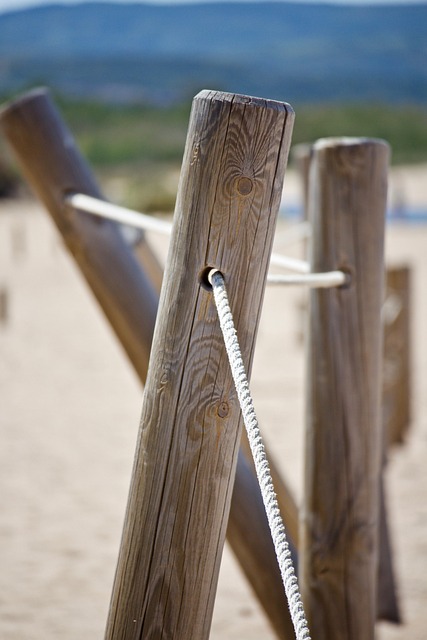Fence staining and sealing are essential maintenance practices for wooden fences, enhancing their aesthetics and prolonging lifespan. This guide delves into the art of fence staining, offering insights on understanding its benefits, exploring various types, and mastering the preparation process. From choosing the perfect color to implementing effective sealing techniques, you’ll discover the secrets to achieving a stunning, protected finish that elevates your outdoor space.
- Understanding Fence Staining: Benefits and Types
- Preparing Your Wooden Fence for Staining
- Choosing the Right Stain: Color and Finishes
- Sealing Techniques for Longevity and Protection
Understanding Fence Staining: Benefits and Types
Fence staining is an effective way to enhance the appearance and protect wooden fences. It involves applying a colored sealant to the fence’s surface, offering numerous advantages. Firstly, staining adds a distinctive aesthetic appeal, transforming your outdoor space with rich colors that complement various architectural styles. Secondly, it serves as a protective layer against elements like UV rays, rain, and snow, which can cause wood to fade or rot over time.
There are several types of fence staining options available, each with unique characteristics. Water-based stains are popular for their low odor and ease of cleanup, while oil-based stains provide deeper, richer colors that last longer. Some advanced formulas even include UV protection and water repellency in a single product, ensuring your fence stays vibrant and durable for years.
Preparing Your Wooden Fence for Staining
Before applying any stain or sealant, preparing your wooden fence is a crucial step. Start by cleaning the fence thoroughly to remove any dirt, dust, or debris that might hinder the staining process. Use a pressure washer or a brush and detergent solution for this task. Ensure the surface is dry before proceeding.
Next, inspect the fence for any damaged or rotten sections. Repair or replace these areas to ensure the longevity of your fence. Fill in any cracks or holes with suitable wood filler, then sand down the repaired areas until they are smooth. This preparation will not only enhance the aesthetics but also provide a better surface for the stain to adhere to.
Choosing the Right Stain: Color and Finishes
When choosing a fence stain, color selection is just the beginning. Different stains offer varying levels of protection and finishes that can change the look of your wooden fence entirely. Water-based stains are popular for their low odor and quick drying time, suitable for those who prefer a more environmentally friendly option. They provide a range of colors but may not penetrate as deeply into the wood. Oil-based stains, while offering excellent color saturation and protection against the elements, can be more difficult to apply due to their sticky consistency. These are ideal for enhancing the natural grain of the wood.
Finishes also play a crucial role in determining how your fence appears and lasts. Semi-transparent finishes allow some light to pass through, highlighting the wood’s natural color while offering moderate protection. Full-cover or solid stains, as the name suggests, cover the wood completely, providing maximum protection against water, UV rays, and fading but potentially obscuring the wood’s original character. Consider your desired aesthetic and the fence’s exposure to elements when selecting a stain to ensure the best outcome.
Sealing Techniques for Longevity and Protection
Sealing is a crucial step in maintaining the beauty and longevity of your wooden fence. It creates a protective barrier, shielding the wood from the elements. Water, UV rays, and extreme temperatures can all contribute to fading and deterioration, so sealing acts as a shield, preventing these issues. There are various sealing techniques available, each offering different levels of protection.
Two common methods include oil-based and water-based sealers. Oil-based options provide deep penetration, enhancing the natural color and preserving the wood’s integrity. They are highly effective against stains but may take longer to dry. Water-based sealers, on the other hand, are faster-drying and easier to apply, making them ideal for quick projects. While they might not penetrate as deeply, they still offer good protection and a range of color options. Regular sealing, typically every 1-3 years depending on exposure, ensures your fence remains vibrant and robust against the outdoors.
